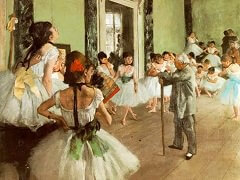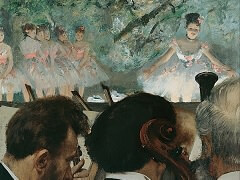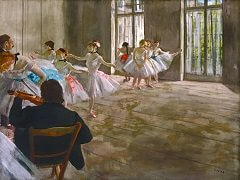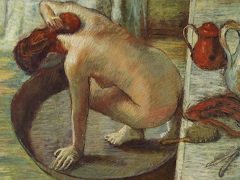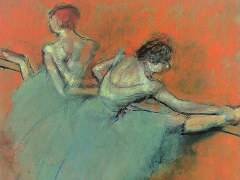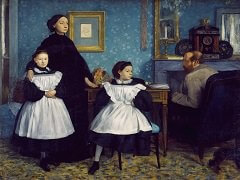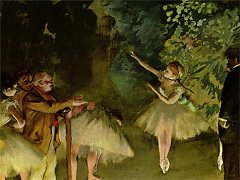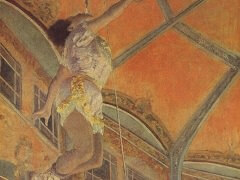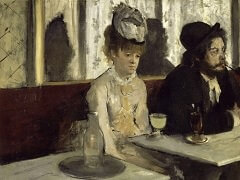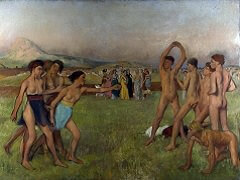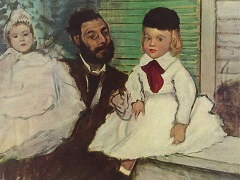The Millinery Shop, 1884-90 by Edgar Degas
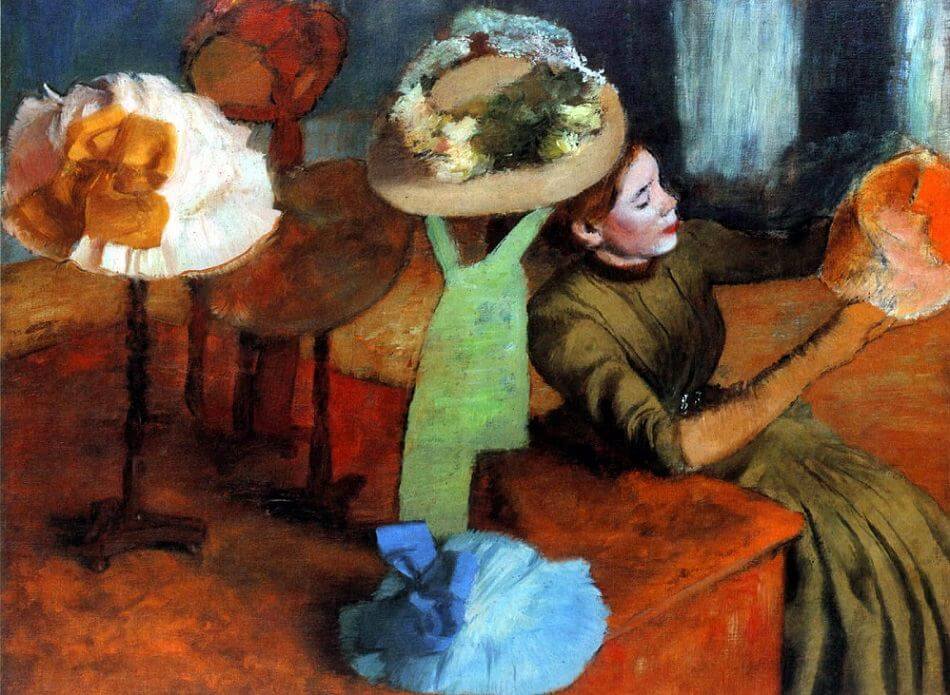
With its unusual cropping and tilted perspective, this painting seems to depict an unedited glimpse of the interior of a small, 19th-century millinery shop, a quick view one might while window shopping. The young shop girl leans back to examine her creation, her mouth pursed around a pin and her hands gloved to protect the delicate fabric of the hat. Totally absorbed, she seems absolutely unaware of the viewer. Edgar Degas scraped and repainted both the milliner's hands and her hat-in-progress so that both appear to be moving - an intended contrast with the finished hats on display to her left.
When Degas made this painting, private milliner's shops were rapidly becoming obsolete. Factories were increasingly producing consumer goods for new department stores. The artist's sensitive rendering of the milliner suggests his respect for the artistry of her handmade work. To a greater extent than his colleagues, Degas used calculation, revision, and technical experimentation to depict private activity in interior spaces. Examinations of the canvas and preliminary drawings show that Degas originally planned to depict a customer trying on a finished hat. While executing this idea, however, he became interested in the act of making and chose to depict the milliner instead. Thus, what began as a painting about vanity and fashion became a metaphor of artistic creation and a tribute to a fading occupation.



